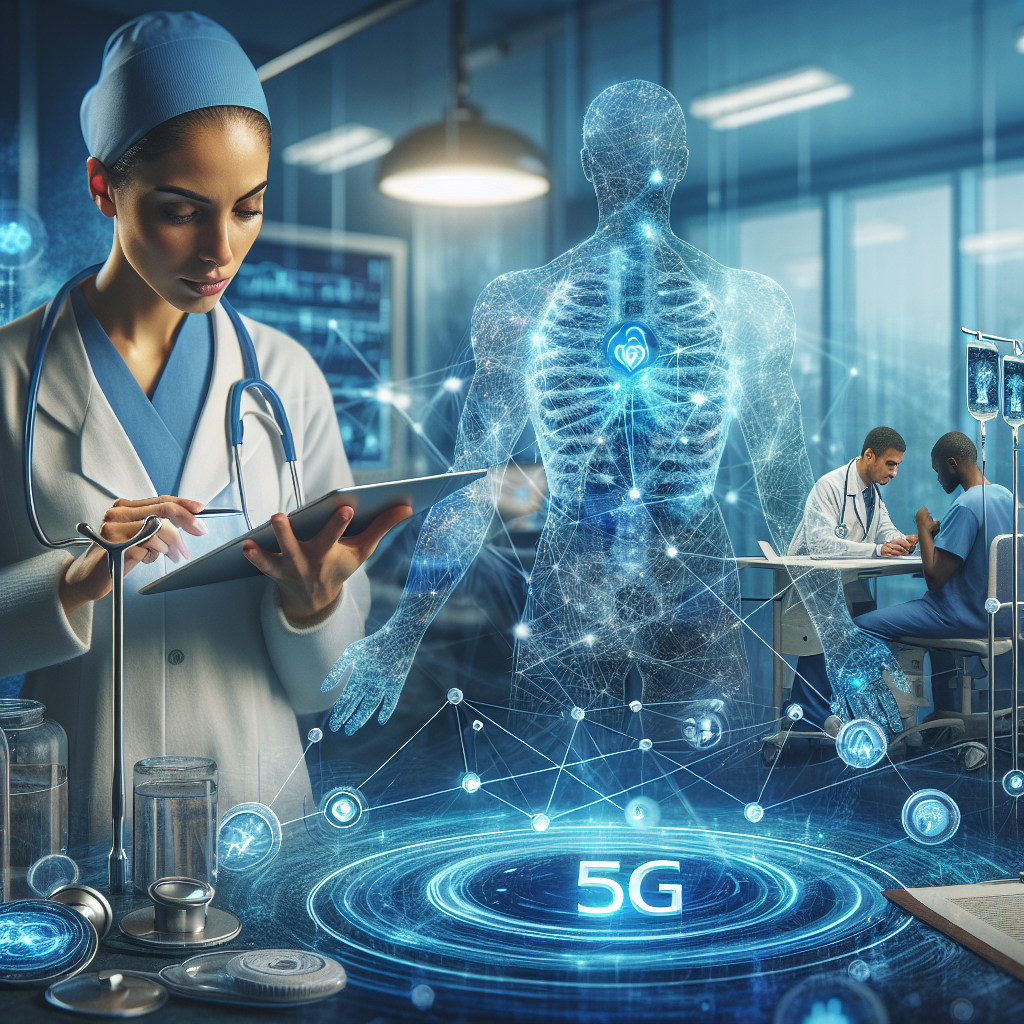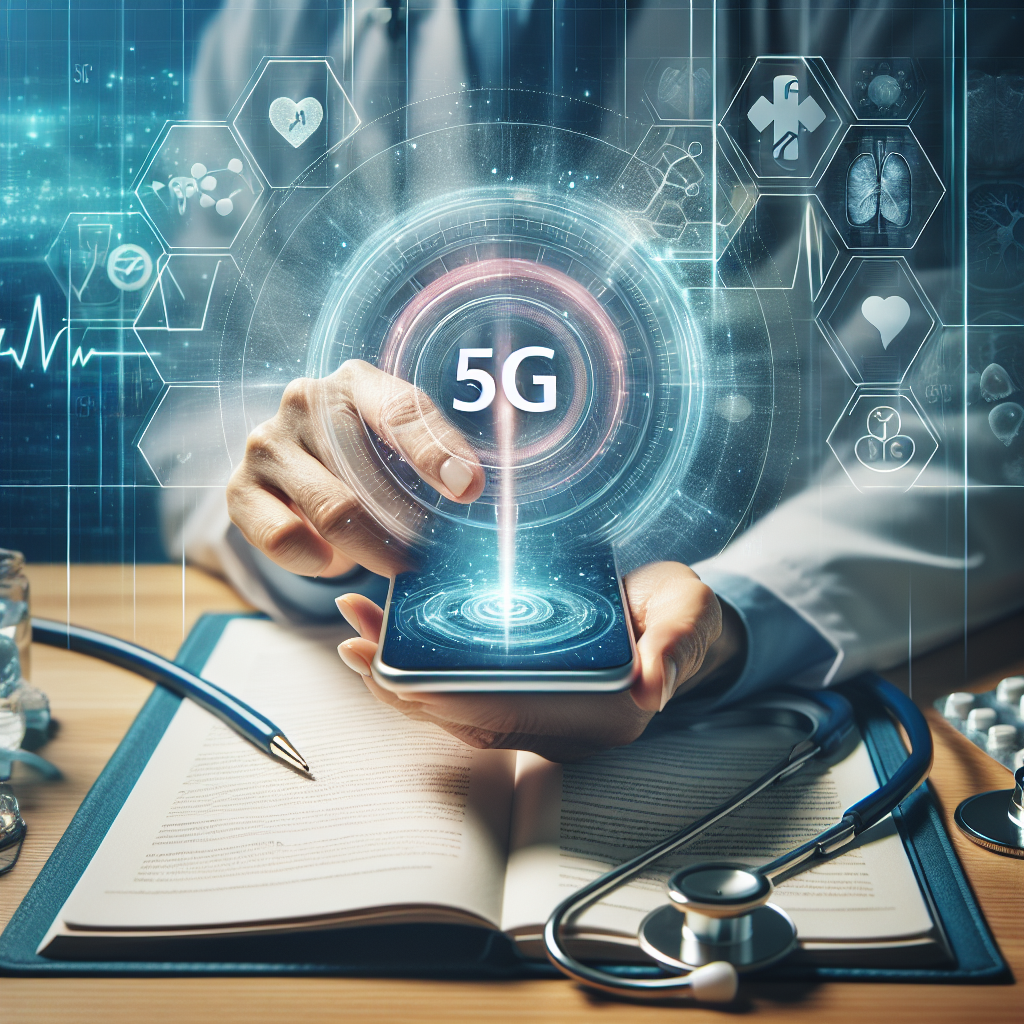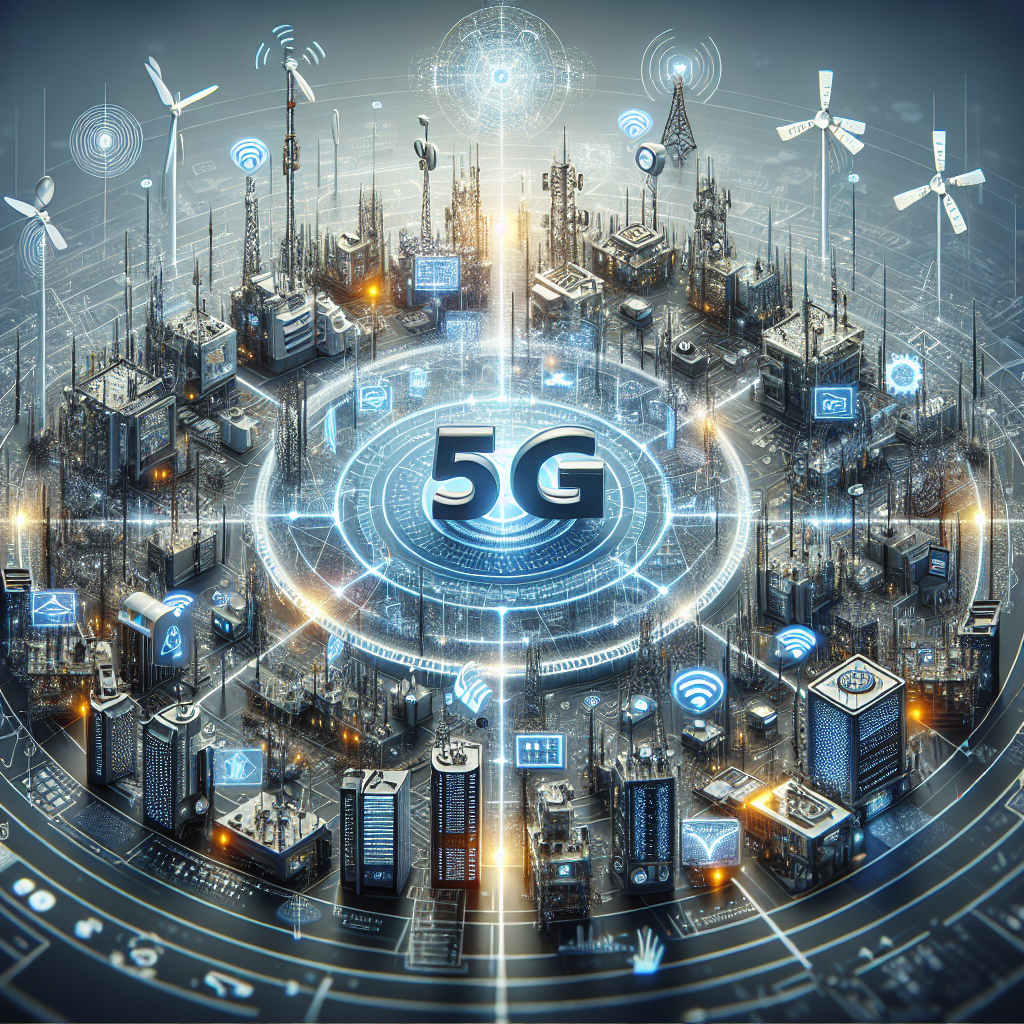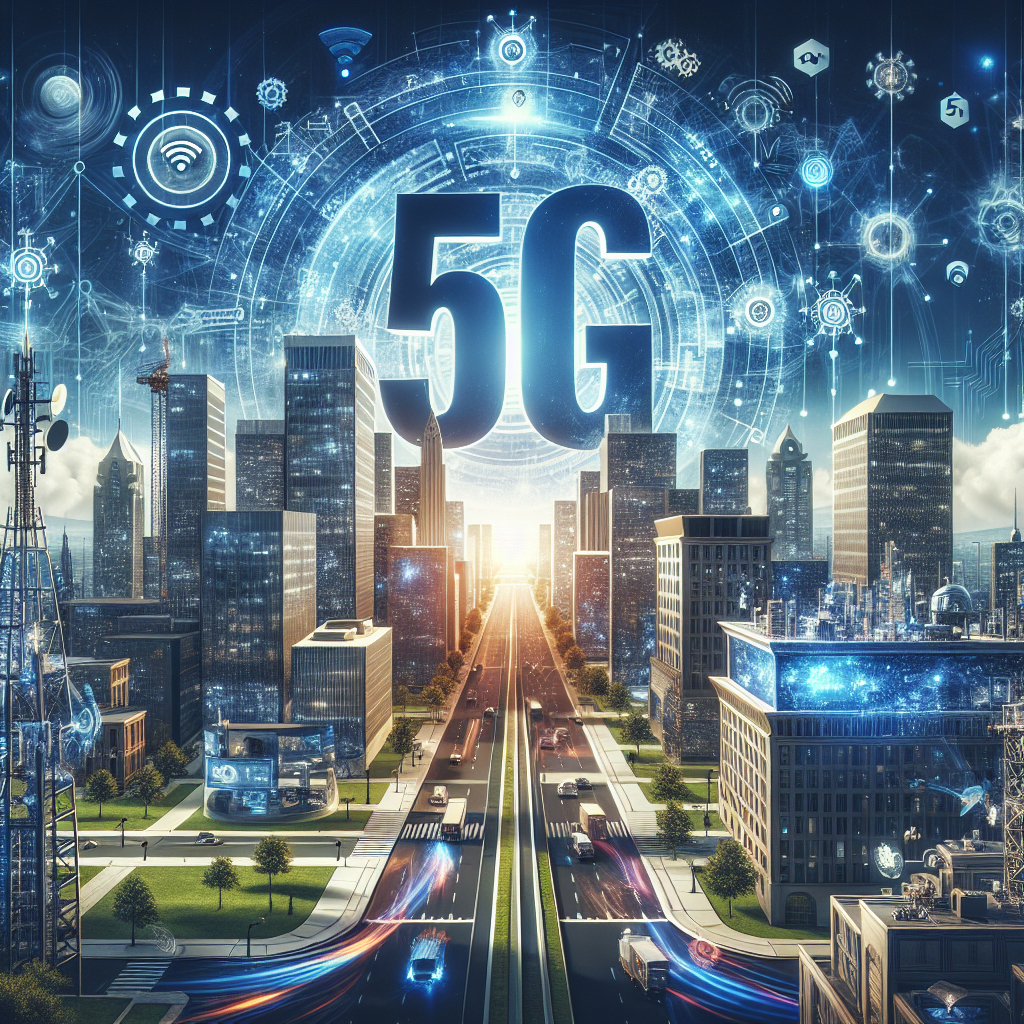In today’s fast-paced world, the integration of 5G internet technology in healthcare is revolutionizing the way medical professionals provide patient care. This comprehensive guide delves into the impact of 5G technology on healthcare, exploring how this innovative technology is enhancing communication, remote monitoring, and data sharing within the medical field. From enabling real-time video consultations to improving the efficiency of medical procedures, 5G technology is paving the way for a new era of healthcare delivery. Join us on a journey as we uncover the transformative potential of 5G technology in shaping the future of healthcare.
Understanding 5G Technology in Healthcare

In the realm of healthcare, the advent of 5G technology promises to revolutionize the way medical services are delivered and accessed. Understanding the intricacies of this cutting-edge technology is paramount for healthcare professionals and patients alike. Let’s delve into the key aspects of 5G technology in the healthcare sector:
- Overview of 5G Technology:
5G, or fifth-generation technology, represents the latest evolution in wireless communication. It boasts significantly faster data transfer speeds, lower latency, and increased network capacity compared to its predecessors. These advancements pave the way for real-time transmission of large medical data sets, seamless connectivity for IoT devices, and enhanced telemedicine services. - Importance of High-Speed Connectivity in Healthcare:
High-speed connectivity plays a pivotal role in enhancing various healthcare applications, ranging from remote patient monitoring to surgical procedures conducted via telemedicine. With 5G technology, medical professionals can access critical patient information instantaneously, collaborate seamlessly across different locations, and leverage advanced technologies like AR and VR for training and diagnostics. - How 5G Differs from Previous Generations of Wireless Technology:
Unlike its predecessors, 5G offers unparalleled speed and reliability, making it ideal for latency-sensitive healthcare applications such as remote surgery and virtual consultations. The ultra-reliable low latency communication (URLLC) feature of 5G ensures minimal delay in data transmission, crucial for scenarios where split-second decisions can impact patient outcomes. Additionally, the massive machine-type communication (mMTC) capability of 5G facilitates connectivity for a myriad of IoT devices within healthcare settings, enabling efficient data collection and analysis for improved patient care.

Advantages of Implementing 5G in Healthcare
Enhancing Telemedicine Services
Incorporating 5G technology in healthcare significantly enhances telemedicine services by revolutionizing the way healthcare providers interact with patients remotely. The following points highlight the advantages of implementing 5G in telemedicine:
- Real-time high-definition video consultations: With the ultra-fast speeds and low latency of 5G networks, healthcare professionals can conduct high-definition video consultations with patients in real-time. This enables more accurate visual assessments, better communication between the doctor and patient, and an overall enhanced telemedicine experience.
- Remote patient monitoring with minimal latency: 5G technology allows for seamless remote patient monitoring with minimal latency, enabling healthcare providers to receive real-time data from wearable devices and sensors. This means that healthcare professionals can closely monitor patients’ vital signs, medication adherence, and overall health status without delays, leading to timely interventions and improved patient outcomes.
- Improved access to healthcare in remote areas: By leveraging 5G technology, telemedicine services can reach remote and underserved areas where access to healthcare is limited. The high-speed connectivity and reliability of 5G networks bridge the gap between patients in rural locations and healthcare providers in urban centers, ensuring that even those in remote areas can receive quality medical care and consultations without the need for physical travel.
In conclusion, the integration of 5G technology in healthcare enhances telemedicine services by facilitating real-time high-definition video consultations, enabling remote patient monitoring with minimal latency, and improving access to healthcare in remote areas.
Empowering IoT Devices in Healthcare
The implementation of 5G technology in healthcare settings has revolutionized the way IoT devices operate, offering a myriad of benefits for both healthcare providers and patients. Below are the key aspects of how 5G empowers IoT devices in healthcare:
- Seamless connectivity for medical devices: 5G technology provides ultra-fast and reliable connectivity, enabling seamless communication between various medical devices. This ensures real-time data transmission and enhances the efficiency of remote monitoring systems.
- Enhanced data collection and analysis for personalized care: With the high bandwidth and low latency of 5G networks, IoT devices can collect vast amounts of data quickly and transmit it to healthcare providers for analysis. This facilitates the delivery of personalized care plans based on real-time insights, optimizing treatment outcomes.
- Integration of wearables for continuous health monitoring: Wearable IoT devices, such as smartwatches and fitness trackers, can now be seamlessly integrated into healthcare systems through 5G technology. This integration allows for continuous health monitoring, early detection of health issues, and timely interventions, ultimately improving patient outcomes and quality of care.
Revolutionizing Surgery and Medical Procedures
In the realm of healthcare, the implementation of 5G technology has the potential to revolutionize surgery and medical procedures in unprecedented ways. Leveraging the high-speed connectivity and ultra-low latency offered by 5G networks, healthcare professionals can explore innovative approaches to enhance surgical practices and medical interventions. Below are some key ways in which 5G is reshaping the landscape of surgery and medical procedures:
- Utilizing Augmented Reality (AR) and Virtual Reality (VR) for Surgical Training
5G technology facilitates the seamless integration of AR and VR applications into surgical training programs. Surgeons can now engage in realistic simulations and immersive training sessions, improving their skills and enhancing surgical outcomes. By visualizing complex anatomical structures in real-time and practicing procedures in a virtual environment, medical professionals can hone their techniques with a level of precision and detail previously unattainable.
- Remote Robotic Surgeries with Ultra-Low Latency
One of the most groundbreaking advancements enabled by 5G technology is the concept of remote robotic surgeries. With ultra-low latency communication capabilities, surgeons can now perform intricate procedures from a remote location using robotic surgical systems. This not only extends the reach of specialized medical expertise to underserved areas but also minimizes the risks associated with human error and fatigue. The real-time responsiveness of 5G networks ensures that surgical commands are executed with unparalleled accuracy and efficiency, paving the way for a new era of remote healthcare delivery.
- Precision Medicine Advancements with 5G-Enabled Technologies
The integration of 5G-enabled technologies in healthcare opens up avenues for significant advancements in precision medicine. By leveraging the high bandwidth and data processing capabilities of 5G networks, healthcare providers can access and analyze vast amounts of patient data in real-time. This enables personalized treatment plans tailored to individual genetic profiles, medical histories, and lifestyle factors. With 5G facilitating seamless data exchange between medical devices, electronic health records, and diagnostic tools, the era of precision medicine is characterized by targeted interventions, optimized outcomes, and improved patient experiences.
Challenges and Considerations in Adopting 5G in Healthcare
Security and Privacy Concerns
- Protecting Sensitive Patient Data in a High-Speed Network
With the implementation of 5G technology in healthcare, one of the primary concerns revolves around safeguarding the confidentiality and integrity of patient data. The high-speed nature of 5G networks poses a challenge as it increases the volume of data transmitted, making it crucial to ensure that encryption protocols are robust enough to prevent unauthorized access. Healthcare providers must invest in advanced encryption mechanisms to protect sensitive information as it travels across the network. Additionally, continuous monitoring and auditing of data transmissions are essential to detect any potential breaches promptly.
- Ensuring Compliance with Healthcare Regulations and Standards
Another critical aspect to consider when adopting 5G in healthcare is maintaining compliance with industry regulations and standards, such as the Health Insurance Portability and Accountability Act (HIPAA) in the United States. Healthcare organizations must ensure that their use of 5G technology aligns with the stringent requirements outlined in these regulations to avoid legal repercussions and protect patient privacy. This involves implementing stringent access controls, regularly updating security measures, and conducting thorough risk assessments to identify and address vulnerabilities in the network. Failure to adhere to these regulations could result in severe consequences, including hefty fines and reputational damage for the healthcare institution.
Infrastructure Requirements
- Upgrading existing healthcare systems to support 5G technology
Incorporating 5G technology into healthcare facilities necessitates a significant overhaul of the current infrastructure. This includes upgrading networking equipment, such as routers and switches, to support the faster speeds and lower latency offered by 5G networks. Additionally, healthcare organizations may need to invest in new hardware and software that are compatible with 5G technology to ensure seamless integration and optimal performance.
- Cost implications of implementing 5G infrastructure in healthcare facilities
The implementation of 5G infrastructure in healthcare facilities comes with substantial cost implications. Apart from the expenses associated with upgrading existing systems and purchasing new equipment, there are also costs related to training staff on how to effectively utilize 5G technology. Moreover, ongoing maintenance and support expenses must be factored in to ensure the reliability and security of the 5G infrastructure in healthcare settings.
Regulatory Hurdles and Legal Implications
Navigating the complex regulatory landscape for healthcare and telecommunications involves a myriad of challenges that healthcare providers and technology companies must address when implementing 5G technology in medical settings. Some key points to consider include:
- Compliance with Health Regulations: Ensuring that the use of 5G technology in healthcare settings complies with existing health regulations and standards is paramount. Healthcare providers must navigate regulations such as HIPAA (Health Insurance Portability and Accountability Act) to safeguard patient data and privacy.
- Telecommunications Regulations: Integrating 5G technology into healthcare also requires adherence to telecommunications regulations. This includes considerations such as spectrum allocation, network security, and data transmission protocols to ensure seamless and secure connectivity.
- Interoperability Standards: Healthcare systems and devices utilizing 5G technology must adhere to interoperability standards to enable seamless communication and data exchange between different platforms and devices. This is crucial for ensuring efficient and effective delivery of care.
- Liability Issues: The use of 5G in healthcare raises complex liability issues that need to be addressed. In the event of system failures, data breaches, or errors in medical diagnosis or treatment facilitated by 5G technology, determining liability and responsibility can be challenging and require clear legal frameworks.

Addressing these regulatory hurdles and legal implications is essential for the successful integration of 5G technology in healthcare settings, ensuring patient safety, data security, and compliance with regulatory requirements.
Case Studies: Successful Integration of 5G in Healthcare
Remote Monitoring and Emergency Response Systems
Remote monitoring and emergency response systems in healthcare have seen significant advancements with the integration of 5G technology. This section explores the practical applications and benefits of utilizing 5G in these critical areas.
- Example: 5G-enabled ambulances with real-time patient data transmission
- With 5G technology, ambulances can now be equipped with high-speed connectivity that enables real-time transmission of vital patient data to hospitals. This means that medical staff can receive crucial information about a patient’s condition even before they arrive at the hospital, allowing for better preparation and more informed decision-making.
- Improved outcomes in emergency situations with faster connectivity
- The speed and reliability of 5G networks have revolutionized emergency response systems. Healthcare providers can now communicate seamlessly and instantaneously, leading to quicker interventions and ultimately saving more lives. This enhanced connectivity also enables remote monitoring of patients in real time, allowing for proactive healthcare management and early detection of potential issues.
Virtual Health Assistants and AI Applications
Case study: AI-powered virtual health assistants for patient communication
In a groundbreaking case study, a leading healthcare provider successfully implemented AI-powered virtual health assistants powered by 5G technology to revolutionize patient communication. These virtual assistants are designed to enhance patient engagement, streamline communication processes, and provide personalized care experiences. By leveraging the high-speed, low-latency capabilities of 5G, healthcare professionals can interact with patients in real-time, offer instant support, and deliver timely medical advice.
The virtual health assistants utilize advanced AI algorithms to analyze patient data, interpret symptoms, and provide relevant information to individuals seeking medical assistance. Through natural language processing and machine learning, these AI applications can understand and respond to patient inquiries, schedule appointments, and even offer remote monitoring services. This level of personalized and responsive communication not only improves patient satisfaction but also enables healthcare providers to deliver more efficient and effective care.
Enhancing patient engagement and care coordination through 5G technology
Furthermore, the integration of 5G technology in healthcare settings facilitates seamless care coordination and enhanced patient engagement. With the ability to transmit large volumes of data quickly and securely, healthcare professionals can access patient records, diagnostic images, and treatment plans instantaneously, regardless of their location. This real-time access to critical information allows for better collaboration among multidisciplinary care teams, leading to more informed decision-making and improved patient outcomes.
Moreover, 5G-enabled virtual health assistants can support remote consultations, telemedicine services, and remote patient monitoring, enabling patients to receive quality care from the comfort of their homes. This not only reduces the burden on healthcare facilities but also increases access to healthcare services for individuals in remote or underserved areas. By leveraging the power of 5G technology, healthcare providers can revolutionize the way care is delivered, making it more accessible, efficient, and patient-centered.
5G-Powered Medical Research and Innovation
In the realm of medical research and innovation, the integration of 5G technology has ushered in a new era of possibilities, propelling advancements and breakthroughs at an unprecedented pace. Through the utilization of 5G networks, collaborative research projects have flourished, enabling seamless data sharing among healthcare professionals and researchers worldwide. This interconnectedness has revolutionized the way medical data is accessed, analyzed, and utilized, ultimately leading to novel insights and discoveries in various fields of healthcare.
Collaborative Research Projects using 5G Networks for Data Sharing
- Real-Time Data Exchange: 5G technology facilitates real-time data exchange between different medical institutions and research centers, allowing for swift collaboration and information sharing. Researchers can now access and analyze large datasets instantaneously, leading to quicker decision-making processes and accelerated research outcomes.
- Remote Monitoring and Diagnostics: With the high-speed and low latency capabilities of 5G networks, healthcare providers can remotely monitor patients’ vital signs and health metrics in real time. This enables early detection of abnormalities and prompt intervention, improving patient outcomes and reducing healthcare costs.
- Virtual Clinical Trials: 5G-powered networks support the implementation of virtual clinical trials, where participants can engage in research studies from the comfort of their homes. This approach not only enhances patient recruitment and retention but also ensures a diverse participant pool, leading to more robust and generalizable research findings.
Accelerating Medical Breakthroughs through Enhanced Connectivity and Data Processing
- Advanced Imaging and Diagnostics: The high bandwidth and low latency of 5G technology enable healthcare professionals to transmit large imaging files quickly and efficiently. This capability enhances diagnostic accuracy and facilitates the adoption of cutting-edge imaging technologies such as 3D imaging and virtual reality in healthcare settings.
- Precision Medicine and Personalized Treatment: By leveraging 5G networks for data processing and analysis, healthcare providers can delve into the realm of precision medicine, tailoring treatment plans to individual patients based on their genetic makeup, lifestyle factors, and medical history. This personalized approach improves treatment efficacy and patient outcomes, marking a significant shift towards patient-centered care.
- Artificial Intelligence and Machine Learning: The integration of 5G technology with artificial intelligence and machine learning algorithms enhances the automation of routine tasks in healthcare, such as medical imaging analysis and patient data management. This synergy accelerates the pace of medical research and innovation, paving the way for more efficient and effective healthcare delivery models.
In conclusion, the integration of 5G technology in medical research and innovation holds immense potential for transforming the healthcare landscape, fostering collaboration, accelerating breakthroughs, and ultimately improving patient care outcomes.
Future Outlook: The Evolution of 5G in Healthcare
5G technology is poised to revolutionize the healthcare industry, offering a glimpse into a future where medical services are more efficient and accessible than ever before. The integration of 5G into healthcare systems is set to bring about a myriad of benefits, from improved data transmission speeds to enhanced connectivity for medical devices. As we look ahead, several key points emerge regarding the evolution of 5G in healthcare:
- Predictions for the future of 5G technology in healthcare: Experts anticipate that 5G will pave the way for advanced telemedicine services, enabling healthcare providers to remotely monitor patients in real-time with unparalleled precision. This shift towards telehealth is expected to streamline the delivery of care, particularly in rural or underserved areas where access to traditional healthcare facilities may be limited.
- Emerging trends and opportunities for further integration: With the rollout of 5G networks gaining momentum, healthcare organizations are exploring new ways to leverage this technology to improve patient outcomes. From implementing IoT devices for continuous health monitoring to utilizing virtual reality for medical training purposes, the possibilities for integrating 5G into healthcare are virtually limitless. Additionally, the rise of wearable health tech powered by 5G connectivity is expected to empower individuals to take a more proactive role in managing their health.
- Potential impact on patient outcomes and healthcare delivery: One of the most significant implications of 5G technology in healthcare is its potential to enhance patient outcomes through faster access to critical medical information. With lower latency and higher bandwidth offered by 5G networks, healthcare professionals can make more informed decisions in real-time, leading to quicker diagnosis and treatment. Moreover, the seamless exchange of medical data facilitated by 5G is expected to improve care coordination among providers, ultimately resulting in more efficient healthcare delivery.
FAQs for Exploring the Impact of 5G Technology on Healthcare: A Comprehensive Guide
What is 5G technology and how does it work in healthcare?
5G technology is the fifth generation of wireless technology that promises faster speeds, lower latency, and increased capacity for data transmission. In healthcare, 5G technology allows for real-time monitoring and communication between medical devices and systems, enabling remote surgeries, telemedicine consultations, and improved access to patient data.
How will 5G technology improve patient care in healthcare?
5G technology will revolutionize patient care by enabling more efficient and accurate data transmission, leading to quicker diagnoses, better treatment plans, and improved patient outcomes. With 5G, medical professionals can access patient records and test results instantly, collaborate with specialists remotely, and monitor patients in real-time.
What are the potential challenges of implementing 5G technology in healthcare?
Some potential challenges of implementing 5G technology in healthcare include ensuring patient data privacy and security, overcoming regulatory hurdles, and training healthcare professionals to effectively use new technologies. Additionally, there may be financial barriers for healthcare facilities to upgrade their infrastructure to support 5G technology.
How will 5G technology impact medical research and innovation in healthcare?
5G technology will facilitate medical research and innovation by enabling faster data sharing, real-time collaboration among researchers and healthcare professionals, and the development of advanced medical devices and technologies. With 5G, researchers can conduct remote experiments, analyze large datasets more quickly, and potentially discover new treatments and cures for diseases.
What are some examples of how 5G technology is currently being used in healthcare?
Some examples of how 5G technology is currently being used in healthcare include remote patient monitoring, telemedicine consultations, virtual reality simulations for medical training, and robotic-assisted surgeries. 5G technology is also being utilized to improve the connectivity and efficiency of healthcare delivery systems, ultimately leading to better patient care and outcomes.


